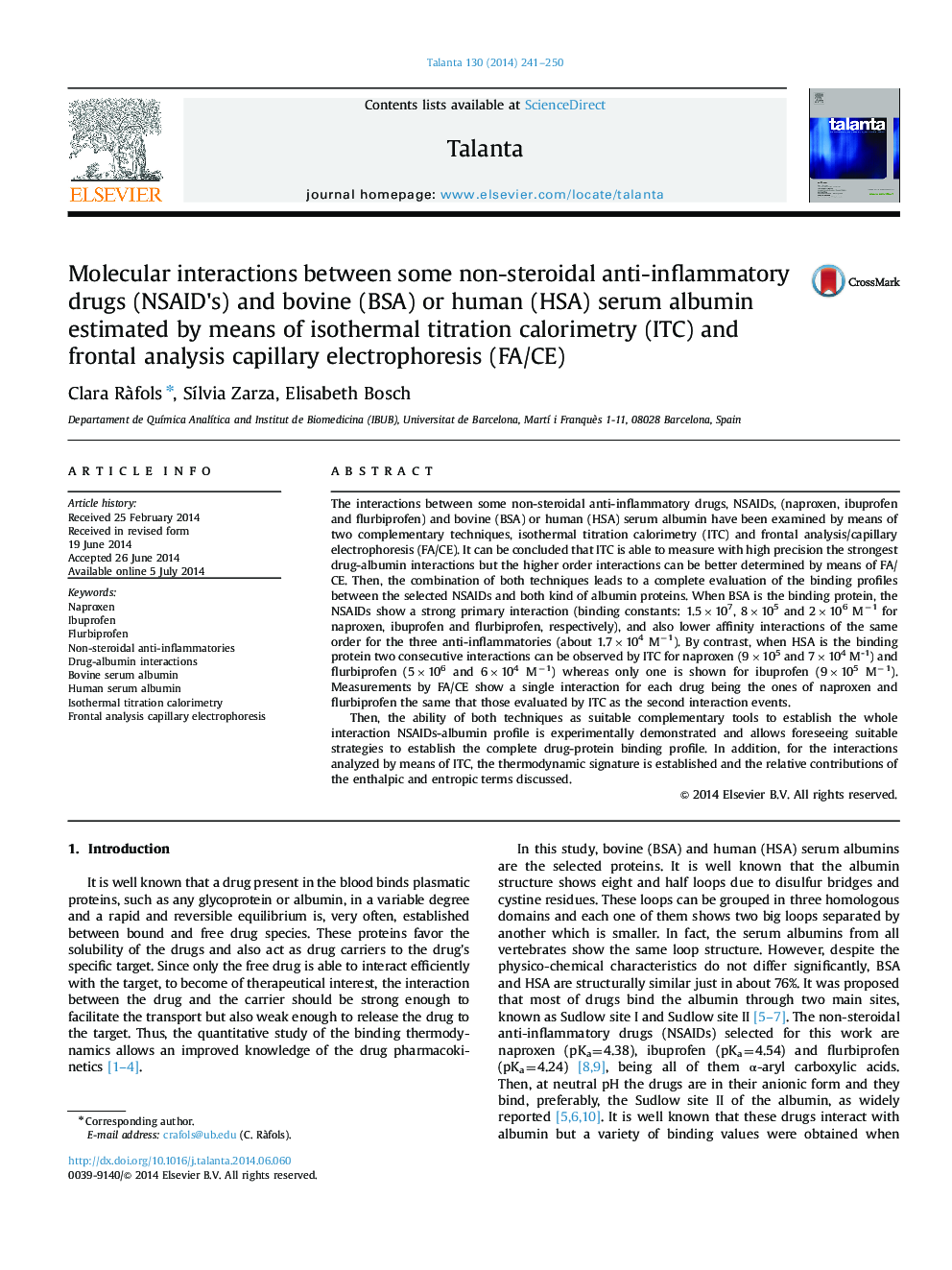| Article ID | Journal | Published Year | Pages | File Type |
|---|---|---|---|---|
| 1243586 | Talanta | 2014 | 10 Pages |
•ITC and FA/CE as complementary tools for drug-protein binding characterization.•Binding constants for some NSAIDs with both bovine and human serum albumins.•Thermodynamic binding signatures of some NSAIDs with albumin proteins.•Determination of both primary and high order drug-protein interactions.
The interactions between some non-steroidal anti-inflammatory drugs, NSAIDs, (naproxen, ibuprofen and flurbiprofen) and bovine (BSA) or human (HSA) serum albumin have been examined by means of two complementary techniques, isothermal titration calorimetry (ITC) and frontal analysis/capillary electrophoresis (FA/CE). It can be concluded that ITC is able to measure with high precision the strongest drug-albumin interactions but the higher order interactions can be better determined by means of FA/CE. Then, the combination of both techniques leads to a complete evaluation of the binding profiles between the selected NSAIDs and both kind of albumin proteins. When BSA is the binding protein, the NSAIDs show a strong primary interaction (binding constants: 1.5×107, 8×105 and 2×106 M−1 for naproxen, ibuprofen and flurbiprofen, respectively), and also lower affinity interactions of the same order for the three anti-inflammatories (about 1.7×104 M−1). By contrast, when HSA is the binding protein two consecutive interactions can be observed by ITC for naproxen (9×105 and 7×104 M-1) and flurbiprofen (5×106 and 6×104 M−1) whereas only one is shown for ibuprofen (9×105 M−1). Measurements by FA/CE show a single interaction for each drug being the ones of naproxen and flurbiprofen the same that those evaluated by ITC as the second interaction events.Then, the ability of both techniques as suitable complementary tools to establish the whole interaction NSAIDs-albumin profile is experimentally demonstrated and allows foreseeing suitable strategies to establish the complete drug-protein binding profile. In addition, for the interactions analyzed by means of ITC, the thermodynamic signature is established and the relative contributions of the enthalpic and entropic terms discussed.
Graphical abstractFigure optionsDownload full-size imageDownload as PowerPoint slide
